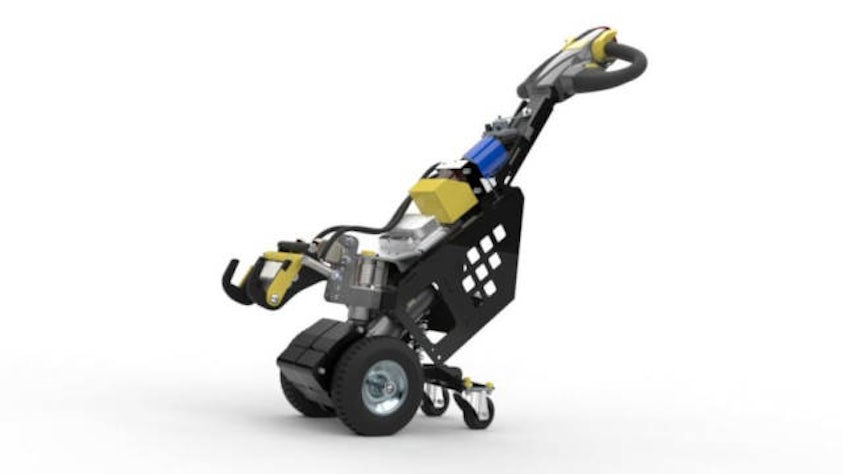Synchronous technology is a feature commonly found in high-level engineering Computer-Aided Design (CAD) software. It's a modeling approach that allows designers and engineers to manipulate and edit 3D geometry more intuitively and efficiently.
Synchronous technology allows you to rapidly create new concept designs, easily respond to change requests, and make simultaneous updates to multiple parts within an assembly. With this design flexibility, you can eliminate cumbersome preplanning and avoid feature failures, rebuild issues and time-consuming rework. The power of synchronous technology also allows you to treat multi-CAD data just like native files, supporting seamless collaboration with suppliers and partners.
With synchronous technology in your CAD software, you no longer must choose between constraint-driven or history-free modeling. You no longer must be a programmer to re-use a model. And you no longer need to worry about using data from multiple CAD systems.
Flexible CAD design creation
With integrated 2D and 3D sketching, synchronous technology allows you to begin your concept designs immediately, without tedious preplanning. Synchronous modeling history-free approach to 3D CAD means that you can work directly with your design geometry and make changes instantly.
Traditionally, CAD modeling involved a history-based approach, where the creation and modification of models were based on a series of steps or operations recorded in a timeline or history tree. While effective for certain tasks, this method can become complex and cumbersome, especially when dealing with intricate or imported geometry.
Synchronous technology focuses on direct modeling
Synchronous technology, on the other hand, focuses on direct modeling. It allows users to modify geometry directly, without being constrained by the original construction history. Here's how it works:
- Direct editing
With synchronous technology, users can directly edit the geometry of a model without needing to worry about the order in which features were created. This means you can move, resize, rotate or otherwise manipulate faces, edges, and vertices freely.
- Real-time feedback
As you make changes to the model, synchronous technology provides real-time feedback, showing you how your modifications affect the overall design. This immediate feedback loop allows for faster iteration and decision-making.
- Intelligent relationships
Synchronous technology intelligently maintains relationships between different parts of the model. For example, if you resize a hole in a face, the surrounding geometry will adjust accordingly to maintain design intent.
- Mixed modeling approach
Synchronous technology can be used alongside traditional history-based modeling techniques. This flexibility allows designers to choose the most appropriate method for each specific task, optimizing workflow efficiency.
- Geometry reuse and interoperability
Synchronous technology makes it easier to work with imported geometry from other CAD systems. Users can directly edit and modify imported models without needing to reconstruct them from scratch, improving interoperability and saving time.
Overall, synchronous technology in CAD software streamlines the design process by offering more flexibility, speed, and simplicity in model creation and modification. It empowers designers and engineers to focus more on creativity and innovation, rather than being bogged down by technical constraints.
Synchronous modeling
Synchronous modeling is an approach used in Computer-Aided Design (CAD) software that allows for the direct manipulation and editing of 3D geometry without being bound by the history or construction order of the model. It enables users to make changes to the geometry of a model more flexibly and intuitively, offering real-time feedback and preserving design intent. Synchronous modeling allows users to directly modify the geometry of a model without needing to follow a predefined sequence of operations or features. This means designers can easily move, resize, rotate, or otherwise manipulate faces, edges and vertices of the model without being constrained by its construction history.
Key features of synchronous modeling
Real-time Feedback: As changes are made to the model, synchronous modeling provides immediate feedback, showing how modifications affect the overall design. This real-time feedback loop allows for quick iteration and evaluation, enabling designers to make informed decisions about design changes.
Intelligent Relationships: Synchronous modeling maintains intelligent relationships between different parts of the model. When modifications are made, surrounding geometry adjusts automatically to preserve design intent and ensure geometric integrity.
Geometry Reuse and Interoperability: Synchronous modeling facilitates the editing of imported geometry from other CAD systems. Designers can directly edit and modify imported models without needing to recreate them from scratch, improving interoperability and saving time.
Mixed Modeling Approach: Synchronous modeling can be used alongside traditional history-based modeling techniques. This flexibility allows designers to choose the most appropriate method for each specific task, optimizing workflow efficiency.
Difference between synchronous modeling and synchronous technology
"Synchronous modeling" and "Synchronous technology" are closely related terms often used interchangeably, but they refer to slightly different concepts within the realm of Computer-Aided Design (CAD) software.
Synchronous modeling
- Synchronous modeling refers specifically to the approach or methodology used to directly manipulate and edit 3D geometry within a CAD environment.
- It emphasizes the ability to make changes to the geometry of a model without being constrained by its construction history or feature order.
- Synchronous modeling allows for direct editing of geometric elements such as faces, edges, and vertices, providing real-time feedback and preserving design intent.
Synchronous technology
- Synchronous technology, on the other hand, encompasses a broader set of functionalities and capabilities within CAD software.
- It includes not only the direct editing and manipulation of geometry but also various supporting features and tools that enhance the design and engineering process.
- Synchronous technology may involve intelligent relationships between different parts of a model, interoperability with other CAD systems, mixed modeling approaches (integrating synchronous modeling with history-based modeling), and other related functionalities.
In essence, synchronous modeling is a specific aspect or application of synchronous technology within CAD software. Synchronous technology encompasses a wider range of features and functionalities beyond just the direct manipulation of geometry, although synchronous modeling is often a central component of these capabilities. Both can be found in Siemens Solid Edge, Siemens NX or Siemens NX X CAD software.
Related products: NX CAD


